Historic San Telmo, the Beating Heart of Buenos Aires
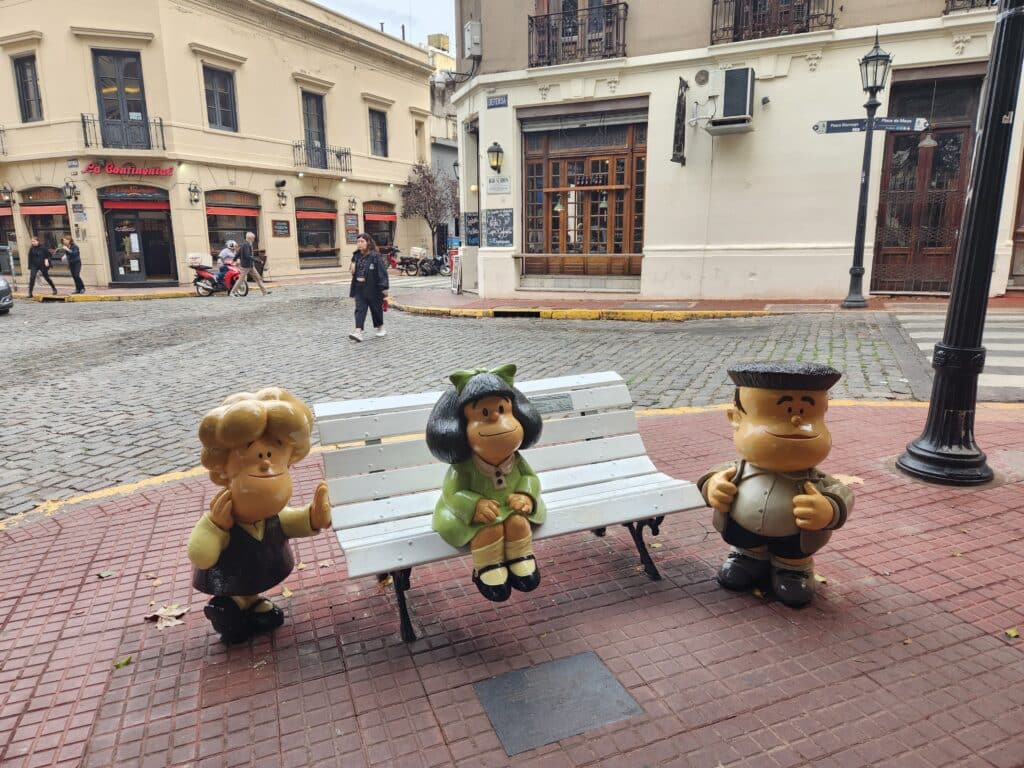
With its cobbled streets, wrought iron balconies, and eclectic architecture, San Telmo is Buenos Aires’ oldest and most historic neighborhood. And, although it is the smallest one with an area of half a square mile, it is packed with fascinating local history and culture. The magic of San Telmo attracts tourists, local hipsters, recent immigrants, and antique hunters alike.
The Origins of San Telmo: Barrio Sur
Spanish conquistador Juan de Garay founded Buenos Aires in 1580, in what is now Plaza de Mayo. The name he chose was Ciudad de la Santísima Trinidad y Puerto de Santa María del Buen Ayre but was later thankfully shortened to the current version.
Garay’s first order of business was to allot 250 oblong plots of land to his companions, around which the city later developed. The southern limit of this grid was marked by the Zanjón de Granados, a ravine and creek that flowed into the River Plate.
The area between Plaza de Mayo, which then was and still is the seat of government, and Granados Creek was populated mainly by dock workers. In the 1740s, the Jesuits founded a church and convent, Our Lady of Belén, but after their expulsion from Spain and the Spanish colonies, the church was renamed San Pedro Telmo, the patron saint of seafarers. Thus, Barrio Sur became known as San Telmo. Although it suffered many changes through the centuries, the beautiful parish church still stands proud (340 Humberto 1 St.).
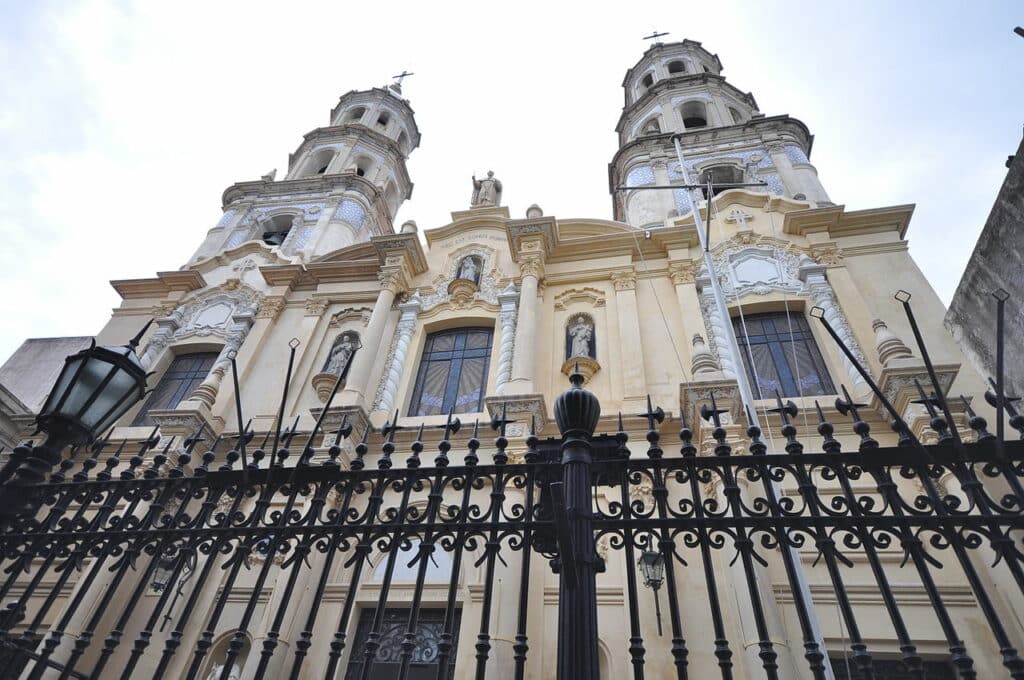
San Telmo’s Heyday and the Yellow Fever Epidemic
Well-to-do, upper-class families started to build large houses in the style of Roman villas. They usually were two stories high, with two or three consecutive patios. The first patio, fragrant with orange and lemon blossoms, was for the family whereas the other patios were used as service areas. The back of the villas contained the servants’ quarters and storage rooms.
However, everything changed in 1871, when yellow fever struck the city. The disease spread fast, aided by the warm, humid summer weather, overcrowding, and generally unsanitary conditions. The first cases started in San Telmo and the disease spread like wildfire, especially in the tenements. Impoverished immigrants were crammed in tenement houses called conventillos, with entire families living in a single room and sharing a kitchen and bathroom with the rest of the tenants.
Fearing infection, the upper-class families fled to the northern suburbs. Their grand villas became conventillos as well,with rooms rented to the new waves of immigrants. The Casa de los Ezeiza (1179 Defensa St.) is one example of a genteel house converted into tenements, where up to 32 families once lived in uncomfortably close quarters. In the 1980s, a team of architects restored the house to its original condition. It is now home to antique stores, boutiques, and a café.
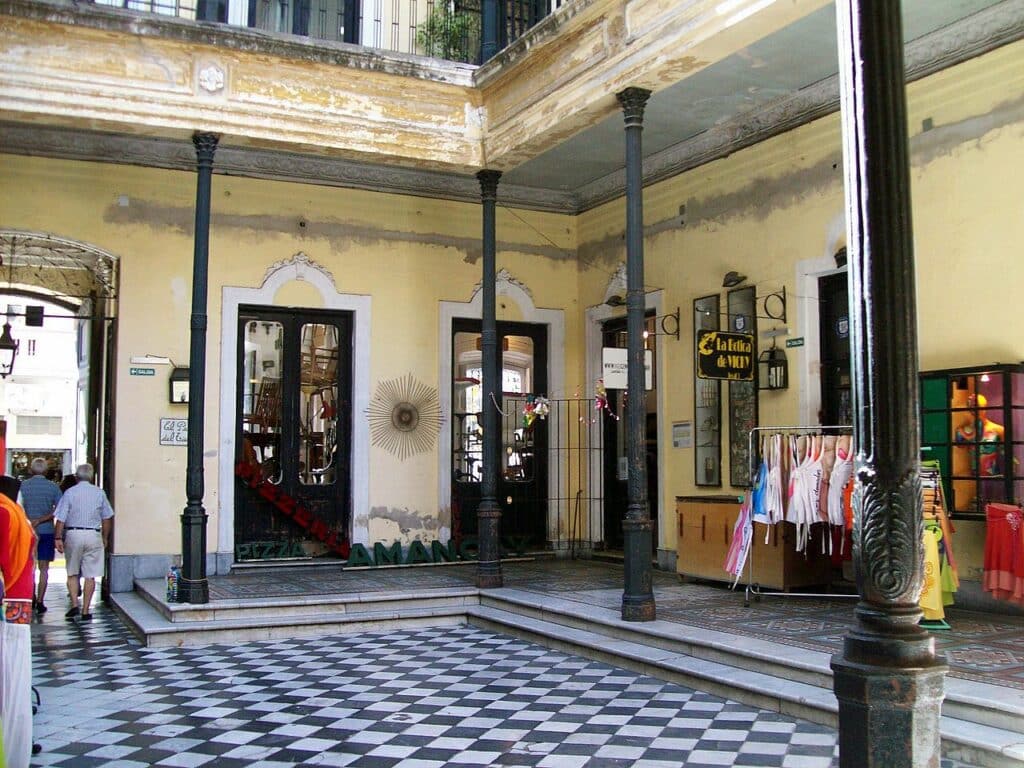
Unfortunately, because tourism is driving the rental market up, long-time residents are being priced out and forced to move elsewhere. History has a way of repeating itself.
As a result of the yellow fever epidemic, the local government started to build sewers and a water supply system. A visit to the Zanjón de Granados (755 Defensa St.) provides a glimpse into the city’s past, as property records go back to 1580 when Juan de Garay distributed the land. The current construction is from 1830. As preservation work was underway in the mid-1980s, workers discovered old tunnels and work was halted. A renowned urban archeologist and his team unearthed utensils and the remains of water wells, sewers, cisterns, and tunnels that go as far back as the 1700s. you can literally walk back in time, as the lower levels are progressively older. It is all on display and there are guided visits in Spanish and English.
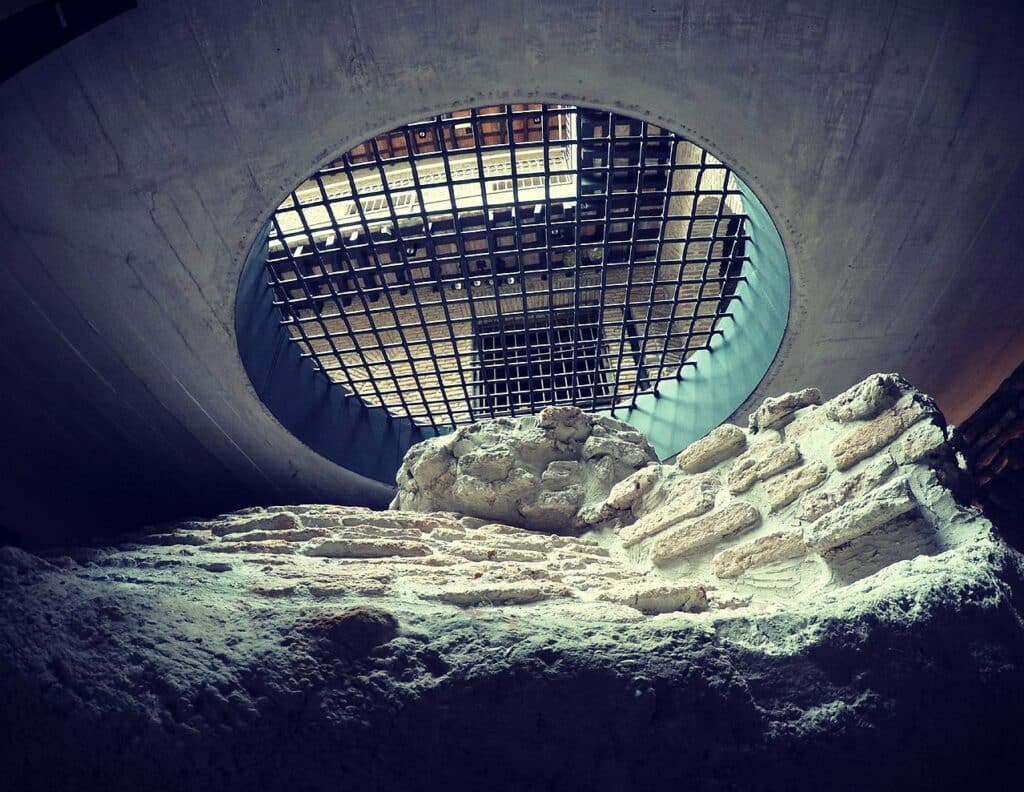
The economic decline that followed the epidemic lasted for decades. The old constructions slowly decayed, as the city government overlooked the southern areas. Thankfully, the mass demolition project of 1957 did not come to fruition. However, many historic buildings were torn down and replaced by characterless modern ones. By the late 1970s, the urban fabric was irreparably damaged. However, since then, different conservation projects have been carried out to preserve what is left of the neighborhood’s identity.
Find Your Memorable Experience in Buenos Aires HERE
Arts and Antiques
Plaza Dorrego (corner of Defensa and Humberto 1) has held an antique market every weekend since 1970. On weekdays, the surrounding cafes and restaurants set up tables under the trees, so patrons can enjoy a quiet meal or a coffee while they watch tango dancers whirl across the plaza.
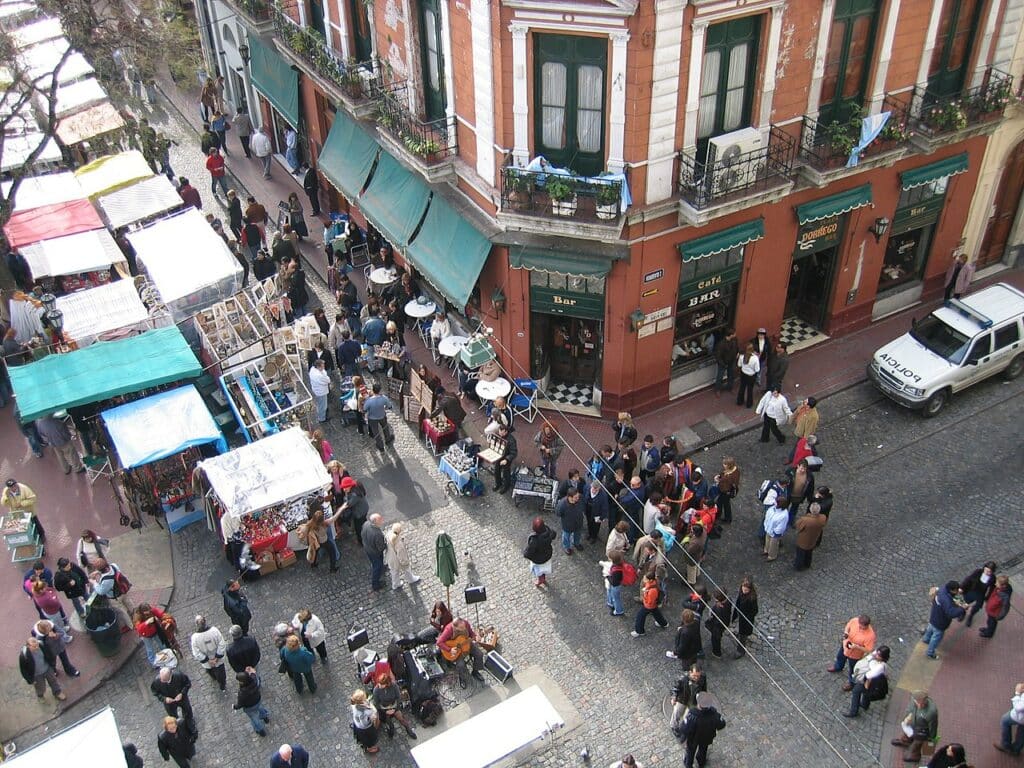
The stores in the area surrounding the plaza have become a magnet for antique hunters as well. A mixture of antique stores, fruit and vegetable stalls, and a trendy food court, the Mercado de San Telmo (corner of Defensa and Carlos Calvo) was built in 1897 in the Italianate style to serve as the main local food market.
Those interested in modern art, however, can visit the Museo Moderno, the Modern Art Museum of Buenos Aires. The imposing red brick building belonged to a tobacco company and was built in 1918. The collection includes works of art by renowned local and international artists, like Piet Mondrian or Raquel Forner.
Popular Culture
San Telmo has a playful side too. Colorful sculptures of beloved Argentinean comic-book characters dot the streets. For locals, it is a trip down memory lane. Each character evokes treasured childhood memories, and it is a joy to search for them in the streets.
Street art is part of the neighborhood’s identity. Local and international artists express themselves through murals and graffiti. Some have a political or social or historical message, while others simply want to celebrate art. San Telmo is a celebration of what makes the city unique.
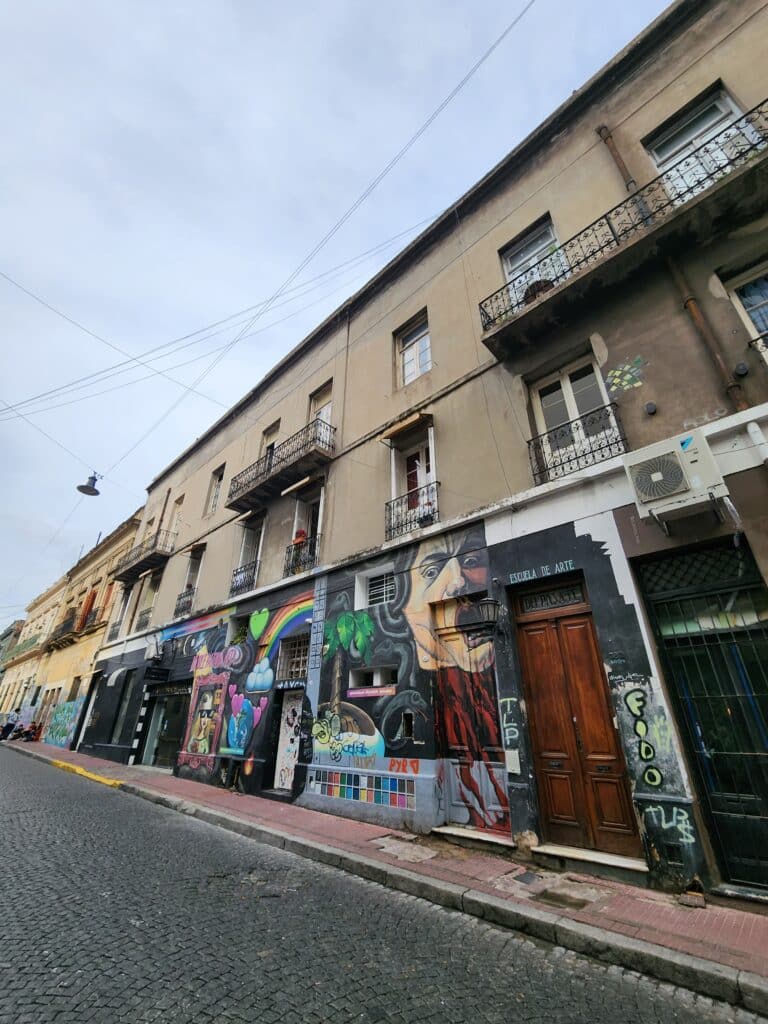
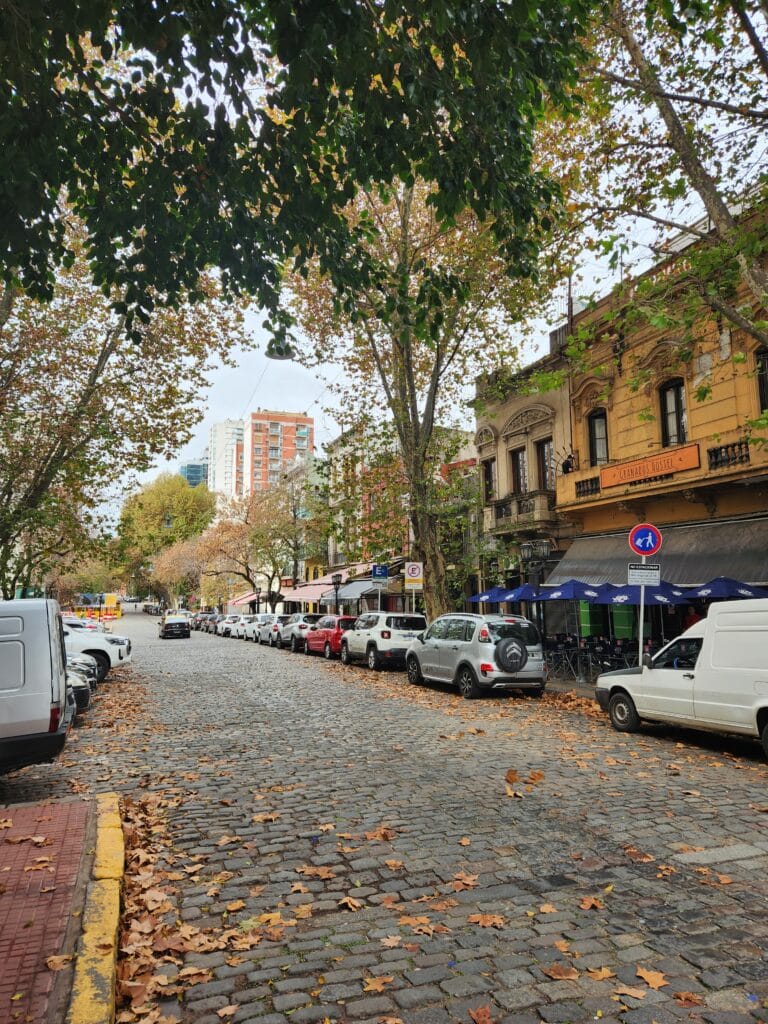
COVER: San Telmo Beloved comic characters Mafalda, Manolito and Susanita. Photo: Ana Astri-O’Reilly
Find Affordable Accommodations in Buenos Aires


Ana Astri-O’Reilly is a fully bilingual travel blogger and writer originally from Argentina. She has published travel and food articles in a variety of outlets and is active on social media platforms. You can read her musings, memories, and other writing here.